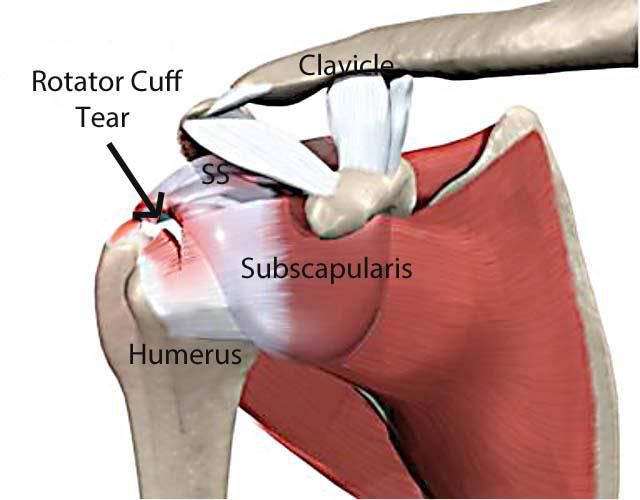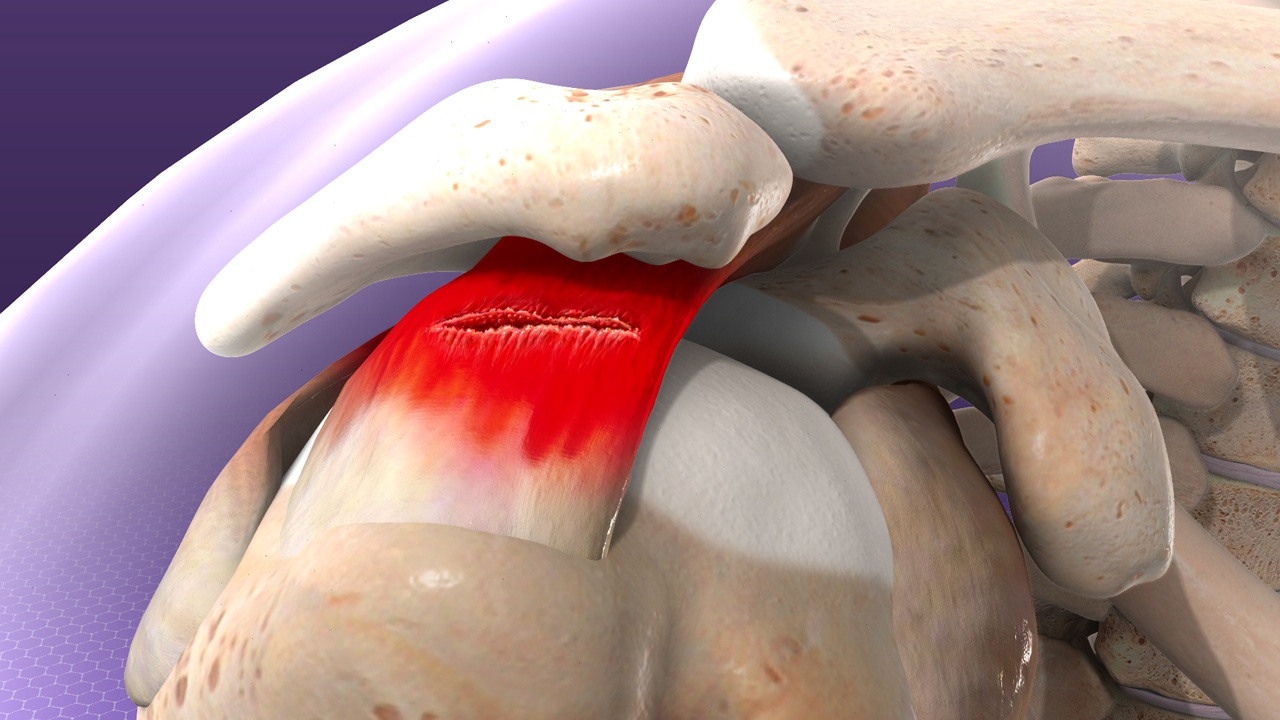Rotator Cuff Injuries
A rotator cuff is a group of muscles and tendons in your shoulder. They help you lift and move your arms away from your body. The rotator cuff keeps the ball of the upper arm bone (humerus) in the shoulder blade socket. A rotator cuff injury can cause a dull ache which may increase gradually over time. Rotator cuff injuries are common and increase with age.
These injuries can occur earlier in people who have jobs that require repeated overhead movements, such as painters and carpenters. Physical therapy exercises can increase the flexibility and strength of the muscles surrounding the shoulder joint. For many people with rotator cuff problems, these exercises are all that are needed to manage their symptoms.
Sometimes rotator cuff tears can result from a single injury. In such cases, people should seek medical attention quickly as they may need surgery.
Contact us today or request an appointment online!
Types of Rotator Cuff Injuries-
- Partial: With an incomplete or partial tear, the tendon still somewhat attaches to the arm bone.
- Complete: With a full-thickness or complete tear, the tendon separates completely from the bone. There’s a hole or rip in the tendon.
What causes a rotator cuff tear?
An accident, such as a fall, can cause a broken collarbone or dislocated shoulder that tears the rotator cuff.More commonly, rotator cuff tears occur over time as the tendon wears down with age and use (degenerative tear). People over 40 are most at risk.Rotator cuff injuries are most often caused by progressive wear and tear of the tendon tissue over time. Repetitive overhead activity or prolonged bouts of heavy lifting can irritate or damage the tendon.
Causes of degenerative tears include:
Bone spurs: Bony growths can form on the top of the shoulder bone. These bone spurs rub against the tendon when you lift your arm. This shoulder impingement creates friction between the bone and tendon. Eventually, a partial or complete tear may occur.
Decreased blood flow: Blood flow to the rotator cuff decreases as you get older. Your muscles and tendons need a healthy blood supply to repair themselves. If blood doesn’t nourish the tendons, they can tear.
Overuse: Repetitive shoulder movements during sports or on the job can stress muscles and tendons, causing a tear.

Symptoms
The pain associated with a rotator cuff injury may:
- Be described as a dull ache deep in the shoulder
- Disturb sleep
- Make it difficult to comb your hair or reach behind your back
- Be accompanied by arm weakness
Some rotator cuff injuries don’t cause pain.
Risk factors
The following factors may increase the risk of having a rotator cuff injury:
Age. The risk of a rotator cuff injury increases with age. Rotator cuff tears are most common in people older than 60.
Some occupations. Jobs that require repetitive overhead arm motions, such as carpentry or house painting, can damage the rotator cuff over time.
Certain sports. Some types of rotator cuff injuries are more common in people who participate in sports like baseball, tennis and weight-lifting.
Family history. There may be a genetic component involved with rotator cuff injuries as they appear to occur more commonly in certain families.
How is a rotator cuff tear diagnosed?
Your healthcare provider will perform a physical exam to check for shoulder tenderness, range of motion and arm strength.
To confirm a diagnosis, you may get:
- An X-ray to check for arthritis or bone spurs.
- An MRI or ultrasound to look for tendon tears.
MANAGEMENT AND TREATMENT
What are the complications of a rotator cuff tear?
A rotator cuff tear can get worse without treatment. A complete tear can make it nearly impossible to move your arm. Without treatment, you may have chronic shoulder pain and find it very difficult to use the injured arm.
What are the non-surgical treatments for rotator cuff tears?
Rotator cuff tears do not heal on their own without surgery, but many patients can improve functionally and reduce pain with non-surgical treatment by strengthening their shoulder muscles. Just because there is a tear does not necessarily mean that a surgery is necessary. About eight out of 10 people with partial tears improve with nonsurgical treatments. It may take up to a year for the condition to improve.
Non-surgical treatments include:
An arm sling and rest to give your shoulder time to heal. You may need to change activities and stop a particular job or sport for a while.
Nonsteroidal anti-inflammatory drugs (NSAIDs) to minimize pain and swelling.
Physical therapy to learn strengthening and stretching exercises.
Steroid injections to relieve pain and swelling.

What are the surgical treatments for rotator cuff tears?
Your healthcare provider may recommend surgery if you have a complete tear or if nonsurgical treatments do not help a partial tear. You may also have surgery if your job or sports interests affect your shoulder.
Most rotator cuff surgeries are performed arthroscopically through small incisions. Surgery is an outpatient procedure. You go home the same day, but the overall recovery after this surgery is very significant and may take a year or more.
Some tears cannot be repaired due to the size and/or age of the tear and may require reverse shoulder replacement, tendon transfer, or debridement of scar tissue without repair.
During the surgery, your healthcare professional:
He inserts an arthroscope (small camera) through a small incision in your shoulder.
It refers to images taken from the arthroscope to perform the procedure.
He inserts small instruments into small cuts in your shoulder to remove the bone spurs and reattach the tendon to the upper arm bone.
For a partial tear, your healthcare provider may only need to cut the frayed parts of a partially torn tendon. This debridement procedure prevents the shoulder ball and socket from getting caught in the tendon and tearing it further.
After surgery, you must wear a sling to immobilize your arm for four to six weeks. Then you can start physical therapy. Most people regain shoulder function and strength within four to six months after surgery, but full recovery can take up to 12-18 months.
How can I prevent a rotator cuff tear?
To prevent a rotator cuff tear, it’s important to keep your muscles and tendons flexible. Your healthcare provider can teach you stretching and strengthening exercises to do at home.
Outlook
Most people see improvement with nonsurgical treatments. Healing takes time because your body needs time to heal. Most people who have surgery to repair a torn rotator cuff regain function.
It is possible to tear the same tendon again, especially if the initial tear is larger than 1 inch. Re-rupture that causes severe pain or loss of movement may require surgery.
